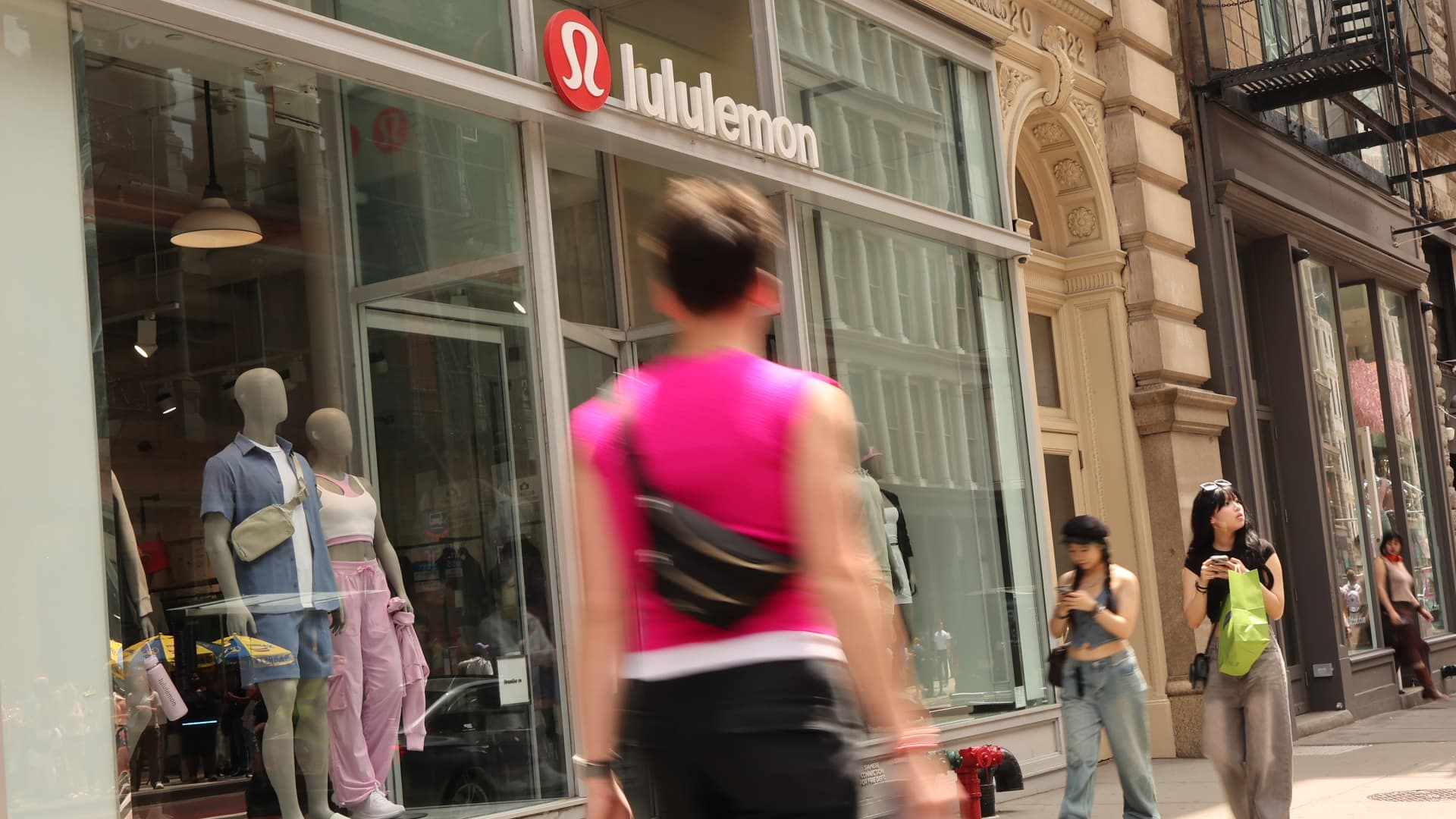Understanding Lululemon’s Recent Market Setbacks: An In-Depth Analysis
Lululemon Athletica’s stock has taken a significant hit recently, with declines ranging from 13% to over 20% within a few trading sessions. This noticeable market volatility reveals more than just transient investor jitters—it reflects deeper underlying issues facing the company, including uncertain demand forecasts and a fraught economic landscape. Despite delivering solid quarterly earnings, Lululemon grapples with a set of complex challenges, from external trade pressures to shifting consumer behaviors. To grasp the full picture, it’s crucial to dissect the interplay of these factors, the company’s strategic responses, and their implications for future growth.
Market Dynamics and Investor Sentiment
The market’s reaction to Lululemon’s latest earnings disclosures has been stark. Even though the company reported a 10% revenue growth, reaching $10.6 billion for fiscal 2024, and beat earnings per share (EPS) estimates in Q1 2025, investors reacted coldly. The core of their concern lies in the company’s cautious full-year profit outlook, which contrasts with recent strong performance. This mismatch signals skepticism about whether Lululemon can maintain its growth trajectory amid emerging challenges. The steep declines in after-hours trading—at times plunging as much as 21%—underscore a broader worry about the sustainability of results against a backdrop of economic uncertainty.
Root Causes of Weak Guidance
Tariffs and Geopolitical Risks
Tariff uncertainties have risen as a significant pressure on Lululemon’s financial health. Though often overlooked by consumers, these external factors add volatility to costs and complicate pricing decisions. Geopolitical tensions and an unpredictable trade environment increase the risk of fluctuating supply chain expenses, making it tough to forecast with accuracy or lock in favorable margins. The resulting operational headaches directly impact profitability and strategic planning, forcing the company into a cautious stance.
Consumer Behavior and Economic Pressures
The economic headwinds are equally formidable. Inflationary pressures and broader macroeconomic uncertainty have dulled consumer enthusiasm, particularly in Lululemon’s largest market, the Americas. Reports indicate a slowdown in foot traffic and a hesitance among shoppers to indulge in discretionary spending on apparel, especially premium sportswear. Industry tracking tools like Placer.ai confirm a tangible decline in store visits and retail engagement. This softening demand pressures Lululemon’s comparable store sales and undermines confidence in forward-looking revenue growth.
Competitive Pressures and Product Challenges
On top of external factors, internal struggles with product rollouts have added to Lululemon’s difficulties. Some recent launches have not met expectations, potentially due to weaker brand recognition in newer segments or geographies, and growing competition in the leisurewear space. Missteps in execution can lead customers to look elsewhere, affecting brand loyalty and repeat purchase rates. As competitors innovate and expand aggressively, Lululemon must sharpen its product strategy to maintain its premium positioning.
Financial Ramifications and Forecast Adjustments
Lululemon’s financial revisions illustrate the cautious reality underlying recent optimism. Although fiscal 2024 saw a 10% revenue increase to $10.6 billion, forecasts for fiscal 2025 show a tempered outlook, projecting revenues in a narrow range between $11.15 billion and $11.3 billion. Compared to prior estimates skewed toward the high end, this signals an effective revenue plateau. Earnings per share expectations have also been trimmed by approximately $0.32, reflecting the risk-averse sentiment among analysts.
Quarterly guidance for Q2 2025, at $2.54 billion to $2.56 billion, similarly missed some street expectations, reiterating the cautious tone due to ongoing macroeconomic and operational uncertainties. Nevertheless, Lululemon’s strong balance sheet and management’s intent to aggressively leverage competitive edges suggest confidence in navigating this choppy environment.
Strategic Plans to Counter Challenges
Despite the headwinds, Lululemon remains ambitious, unveiling a five-year growth plan targeting revenue doubling to $12.5 billion by 2026. This growth blueprint is a statement of faith in its brand strength, strategic adaptability, and untapped market opportunities. Key strategic pillars likely include expanded geographic reach—particularly in China, a region believed to hold significant growth potential—alongside sustained investment in innovation and digital retail channels. The “Like New” re-commerce initiative aims to tap into growing consumer interest in sustainability and circular fashion, combining social trends with business imperatives.
Success will depend heavily on the company’s ability to manage tariff and cost pressures, reinvigorate consumer demand through compelling product offerings, and enhance operational execution. This mix is essential not only for hitting financial targets but also for restoring investor confidence.
Navigating the Wider Apparel Industry Landscape
Lululemon’s challenges mirror a broader narrative playing out across the apparel retail sector. Inflation, economic uncertainty, and evolving consumer preferences have forced many players to revise or withdraw earnings guidance. Industry-wide price increases, used to offset rising input costs, have paradoxically dampened demand further, producing a cautious cycle of consumer spending.
Cost-cutting efforts, including layoffs and operational efficiencies, signal widespread caution and a reassessment of growth assumptions. Investors must weigh these near-term disruptions against the sector’s long-term innovation potential and brand strength to identify viable growth stories.
Looking Ahead: Steering Toward Resilience and Renewal
Lululemon’s recent performance has exposed vulnerabilities shared by many in today’s uncertain economic climate. While short-term earnings guidance may disappoint, the company’s fundamentals remain robust, underpinned by a loyal customer base and a clear vision for growth. The crucial test will be Lululemon’s agility in navigating tariff risks, reigniting consumer interest with fresh products, and capitalizing on growth corridors like China and digital commerce.
This balancing act—resilience amid volatility—defines the challenges of modern retail. Lululemon’s ability to execute its strategic plans and capitalize on market opportunities will shape its trajectory in the years ahead, potentially transforming current setbacks into a foundation for sustainable, long-term success.











